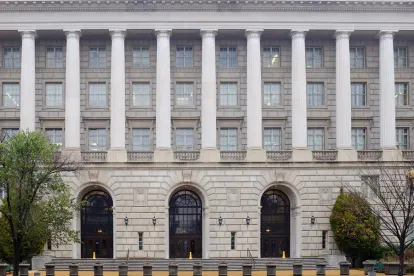Economic development in distressed communities is ramping up as the Internal Revenue Service (IRS) and U.S. Treasury Department update and finalize guidance released last October to govern investments in Opportunity Zones. This guidance, in the form of proposed regulations, a revenue ruling, and draft Form 8996, will be the subject of a public hearing on February 14, 2019 at 10:00 a.m. The meeting was originally planned for early January but was postponed due to the federal government shutdown.
In the October guidance, the IRS stated its plan to release more guidance addressing:
-
The term “substantially all” as used in Section 1400Z-2
-
Transactions that trigger the inclusion of deferred gain
-
The term “reasonable period” as it is used for a QOF to reinvest proceeds from the sale of qualifying assets without penalty
-
Administrative rules for when a QOF fails to meet the 90% investment standard
-
Information reporting requirements
Additionally, the IRS has solicited comments on the definition of key terms such as “active trade or business,” “substantial improvement,” and “original use.” We expect guidance on these topics to come soon.
In the meantime, observers of the new federal tax incentive are sifting through the proposed guidance and anxiously awaiting final regulations. This alert identifies 10 key takeaways from the proposed regulations and revenue ruling. It assumes that the reader has a basic understanding of Opportunity Zones.
-
Only capital gain is eligible – The regulations limit Opportunity Zone benefits to capital gain from an actual or deemed sale.
-
Qualified Opportunity Funds (QOFs) are encouraged to invest in businesses rather than directly in property – A QOF that acquires stock or a partnership interest in a Qualified Opportunity Zone Business (QOZB) only need 70% of that business’s assets to be qualifying property in order for the entire investment to be counted toward the QOF’s 90% asset requirement. In contrast, a QOF that invests directly in property needs 90% of its investment to be in qualifying property. The effect is that a QOF that invests indirectly only has to have 63% of its property be qualifying property.
-
Gain realized on the disposition of partnership assets has two opportunities to be invested in a QOF – When a partnership disposes of an asset, it has 180 days to invest in a QOF. If the partnership does not make that investment, the partners have 180 days from the close of the partnership’s year (when they are required to recognize) to invest their distributive share in a QOF, however, they may elect to do so earlier.
-
The tax-free appreciation election can be made as late as Dec. 31, 2047 – Capital gain is eligible to be invested in QOFs as long as such gain is realized by December 31, 2026. In order to allow taxpayers who realize gain this late to benefit from the tax-free appreciation provision, the election deadline was set 20 years from this realization date.
-
Land is severable from the buildings on the land for the “substantially improve” requirement – A taxpayer must “substantially improve” property if the original use of such property in the opportunity zone is not by the QOF. A taxpayer who acquires an existing building on land in an Opportunity Zone is not required to substantially improve the land and may exclude the value of the land from the substantial improvement measurement.
-
How to value property has been clarified – QOFs are required to have 90% of their assets be qualifying property. In order to value assets for this test, the regulations require using the value listed on “applicable financial statements.” If no such statement is available, however, the regulations provide for alternative valuation methods.
-
Working Capital Safe Harbor for a QOZB - A QOF must hold 90% of its assets in qualifying property, such as owning stock or a partnership interest in a QOZB. To qualify as a QOZB, however, a business must meet specific asset requirements. These requirements lead to a concern about the timing of the business using cash contributed to it by the QOF. Fortunately, the proposed regulations established a working capital safe harbor under which a QOZB has up to 31 months to spend cash, cash equivalents, or short term debt without jeopardizing its status as a QOZB.
-
Eligible Interests in a QOF – An interest in a QOF is considered an eligible interest if the investment in the fund is equity, not debt. This requirement includes both preferred stock and partnership interests with special allocations but excludes “deemed contributions” under Section 752(a). While a debt interest in a QOF is ineligible for Opportunity Zone benefits, an interest can be pledged as collateral for a loan without limiting access to the benefits.
-
Character preservation – The tax attributes of the deferred gain, whether long term, short term, etc., are preserved until the end of the deferral period and will be the same as it would have been upon disposition of the QOF interest had the deferral not been made.
-
Self-certification - To be a QOF, a partnership, corporation, or LLC simply has to attach Form 8996 to its tax return for the year it desires to be considered a QOF.




 />i
/>i

